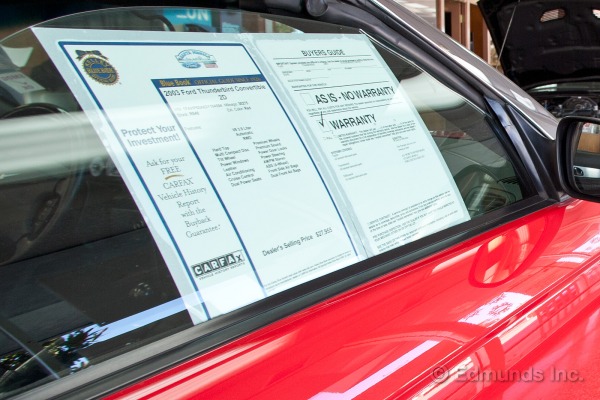
When you shop for a used car, you hear a lot of different pricing terms. To get the best deal and negotiate effectively, you need to understand what they mean and how to use them. Here are seven used-car pricing terms you'll likely encounter, along with some examples of how you're likely to hear them used. We also have some tips on using the terms to negotiate a better deal. If you are shopping for a new car, the pricing terms are different, so be sure to read "Pricing Basics for New-Car Buying." Now let's decipher used-car pricing lingo.
Asking Price: The asking price is just that — the amount the seller asks for the car. It's negotiable. The seller knows he might not get the price he's asking.
How the term is used: A used-car seller might say, "Well, 15 is my asking price, but make me an offer."
Dealer Retail Price: A used-car dealer would like to sell his car at retail price. This is the highest price and is often the most visible one — it's the one pasted on the car's windshield in big, bright letters. But really, a retail price is similar to an asking price, and it is the starting place for negotiations. Dealers use the Kelley Blue Book to set their retail prices. Edmunds.com's True Market Value information, based on actual transaction prices in the marketplace, also lists retail prices. Because of the different way that these two guides arrive at the retail prices, the TMV retail price likely is different from Kelley's price.
How the term is used: A car salesman might say, "My car retails for $20 grand but I'll sell it to you for $17."
Kelley Blue Book Price or Book Price: People often refer to a car's "blue book value" without explaining which book they are referring to. The Kelley Blue Book lists Kelley's own dealer retail, private party and trade-in prices. For more information on the Kelley Blue Book price, read this detailed explanation.
How the term is used: A dealer might say, "I'd like to give you more for your trade-in but the book value is really low."
TMV® Price: Edmunds.com uses different sources to track the average sale price of used cars. It adjusts that price based on mileage, condition and options, and then sets a True Market Value® price or TMV. This is the average market-value price for a used car.
How the term is used: A buyer might say to a dealer, "Your asking price is a lot higher than Edmunds.com's TMV, so I'm offering $1,000 less."
Trade-in Price: Dealers will offer a trade-in price for your used car when you buy a new car. The trade-in price is negotiable and very close to what cars sell for at used-car auctions.
How the term is used: A car salesman might say, "That's as high as we can go on the trade-in price for your SUV. Gas prices are so high that no one wants them."
Wholesale Price: This is what the dealer paid for the car. The parallel in new-car pricing would be a vehicle's invoice price. The wholesale price is the dealer's rock-bottom figure and it's unlikely that he'll sell you the car for that amount. The term is frequently used within the car industry but isn't often used by ordinary private-party car buyers and sellers.
How the term is used: A dealer might say, "I can't sell you the car for 11. I paid 12 wholesale for it at the auction!"
Using Pricing Terms To Negotiate
Here are a few tips for using these terms when you're shopping for a used car: